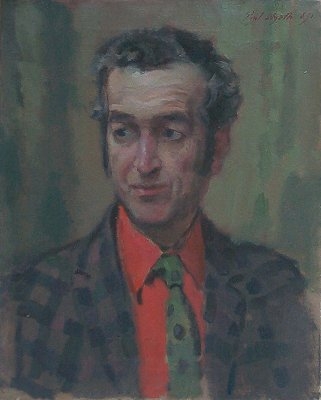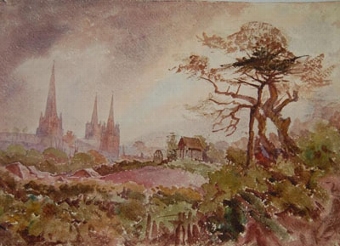featured item
portrait of major r g fanshawe, master of the cottesmore hunt
- View other items in:
- antiques interior design modern and vintage
- other interior design
artware ltd
Enquire about this antique
Artware Ltd has 565 antiques for sale.
click here to see them all
R G Fanshawe was an army officer serving in WWII he was a member of the British equestrian eventing team of the 1936, Berlin Olympics, riding "Bowie Knife" and winning a bronze medal. He and his wife were involved in breeding hounds for the Cottesmore Hunt, which was mastered by their Son Brian from 1981-1992
From 1696 to 1779 there had been a joint arrangement between the 3rd Duke of Rutland, Master of the Belvoir, and the Earl of Gainsborough, Earl Cardigan, Lord Howe and Lord Gower, to hunt one pack on a shared basis in the huge area from Belvoir southwards into East Northamptonshire. Hounds were moved between three different kennels, including Cottesmore, each season. The Gainsborough family withdrew from this joint Hunt in 1732 and took 25 couple of hounds that began to hunt the country later known as the Cottesmore.
In 1776 Tom Noel made an agreement with Hugo Meynell, first Master of the Quorn, known as the ?Father of Foxhunting?. They agreed on boundaries between the Quorn and the Gainsborough pack, kennelled at Cottesmore, that enabled both packs to draw numerous coverts, including those at Owston, Launde and Tilton, nowadays well inside the Cottesmore country.
Sir William Lowther bought the pack from the Gainsboroughs and hunted the Cottesmore country from 1788 until 1802 when he became Viscount Lowther. At first he rented Stocken Hall, but later rented Cottesmore House where he kennelled the hounds, and from which the pack derived its permanent name.
Sir William made the Cottesmore Hunt more widely popular. ?Earl William ? and his staff wore hairy flat-topped hats, and it is believed Surtees depicted them as ?The Flat Hat Hunt?, with Lord Scamperdale as Master, in Mr Sponge''s Sporting Tour.
The Cottesmore pack was purchased from the new Viscount Lowther in 1802 by Sir Gilbert Heathcote of Normanton Park. However, after only four years, William Lowther, the new Earl Lonsdale resumed his Mastership, and continuing in office for another 36 years. Sir Henry Sutton, Mr Henley Greaves, and Sir John Trollope provided a series of shorter Masterships up to 1870 when the Lowthers returned again.
During this time a large part of the country up to Whissendine was loaned to Mr Tailby of Skeffington who, with his own pack, hunted much of the country that later became the Fernie.
Col. Henry Lowther, second son of the second Earl Lonsdale, became Master in 1870. Henry Lowther bought hounds from Tailby for ?1,300. Henry lived at Asfordby before moving to Barleythorpe, north of Oakham, which his father purchased for him as a hunting box. Henry, later created 3rd Earl Lonsdale, built lavish kennels and stables at Barleythorpe from 1872.
In 1904 new kennels and stables were built at Ashwell, and are now listed buildings. The hunt''s kennels moved to the other side of Ashwell parish in 2004.
Three warships of the Royal Navy have been called HMS Cottesmore after the Cottesmore hunt.
Antiques.co.uk Ref: 8ACPM6JM
- Materials:
- Oil on Canvas
- Width (cm):
- 30 x 25in. 76 x 63 cm
Artware Ltd
Artware Fine Art specialises in fine antique, decorative and historical portraits and topographical pictures . We cover a period from the 17th and 18th centuries through to the 19th & 20th Centuries. We have over 150 portraits in stock, which can be viewed on our web site, each historical portrait has well researched biographical information both on the sitter and the artist.
Contact details
18 La gare
51 Surrey row
London
Greater London
SE1 0BZ
UNITED KINGDOM
T: 0207 921 97904
E: greg@artwarefineart.com
W: www.artwarefineart.com














